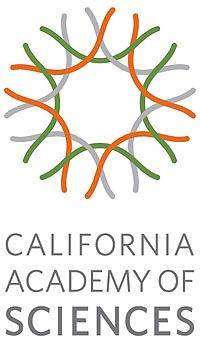The newly reopened California Academy of Sciences in Golden Gate Park is receiving rave reviews, which gives UCSC professors and affiliates their own cause for celebration.
"It's really fun. There are so many nooks and crannies. It's phenomenally big," said anthropology professor and academy vice president Adrienne Zihlman, who is among the UCSC faculty who have been involved with the refurbishment. "I've been there more than five times, and I still see new things when I go."
Home to Steinhart Aquarium, Kimball Natural History Museum, and Morrison Planetarium, the academy's mission is to explore, explain, and protect the natural world through cutting-edge research, educational outreach, and public engagement.
"The California Academy has fantastic collections, including back to the Galapagos Islands in 1906," said Zihlman, who has been a fellow of the academy since 1983 and a science trustee since 1993. "The academy's numerous collections, such as insects and birds, are invaluable as tools for monitoring environmental change."
Zihlman, who called the exhibits "endlessly interesting," offered these tips for first-time visitors:
"You have to go into the rainforest, and be sure to see the show in the theater about planets and outer space--it's really phenomenal," she advised. "And don't miss the living roof. They're monitoring and collecting all kinds of data about the species of insects and birds that visit the roof, and they left a plot unplanted to see what comes in."
And, she said, "Be sure to see Claude, the white alligator. He's finally let his girlfriend share his rock with him. It took him a long time, but the last time I was there, he was sharing it with her."
The academy is governed by a group of up to 300 fellows, including more than two dozen distinguished scientists at UCSC. Some are playing significant roles in planning new activities for the renovated academy, including John Thompson, professor of ecology and evolutionary biology.
"What I like especially about the new building is that it showcases real science," said Thompson. "Lots of places have style without substance, but the academy is presenting science with style, and they didn't water it down so much that you can't understand science as a process. You see biodiversity in the context of multiple species living together. You see little webs of life. That's what makes it a real 21st-century museum."
Exhibits help visitors appreciate the rapid impacts of climate change and the fragmentation of habitat, and the designers did "a very lovely job explaining the process of evolution," noted Thompson, a member of the academy's new six-member Science Advisory Committee, which was established in tandem with the reopening to develop novel ways of engaging the academy with the broader scientific community and enhancing its public outreach.
"We're brainstorming ideas," said Thompson, noting that the academy also encourages visitors to provide feedback that will help shape future exhibits and activities. "That flexibility makes it much more dynamic than a classic museum," he said.
The new facility, which opened September 27, emphasizes biodiversity and sustainability, said Zihlman, who encourages visitors to arrive when the doors open to avoid the crowds. "Wednesday is usually the 'quietest' day," she added.
"There are incredible docents on the floor," said Zihlman. "They are very well trained. People love them."
The new building is so well designed that it boasts more exhibits but takes up a smaller overall "footprint" than the previous facility, which allowed the academy to give land back to Golden Gate Park, noted Zihlman.
Nominated by their colleagues in recognition of notable contributions to one or more of the natural sciences, fellows are appointed by the Board of Trustees and remain members for life. In addition to Zihlman and Thompson, fellows from UCSC include Giacomo Bernardi; Mark Carr; Dan Costa; Daniel Doak; James Estes; Sandra Faber; Laurel Fox; Gregory Gilbert; Lynda Goff; David Haussler; Jean Langenheim, who received the Academy's highest honor, the Fellows Medal, in 2006; Leo Laporte; Burney LeBoeuf; Marc Mangel; Ingrid Parker; Vicki Buchsbaum Pearse; Donald Potts; Peter Raimondi; Barbara Rogoff; Mary Silver; Barry Sinervo; and Terrie Williams. In addition, honorary fellows from UCSC include William Doyle; Janet Leonard; Andrew Todd Newberry; and John Stuart Pearse.



